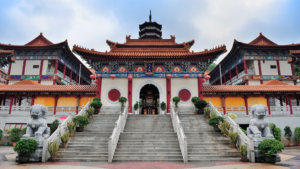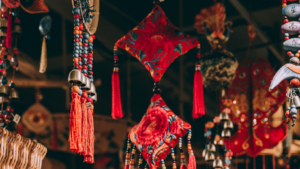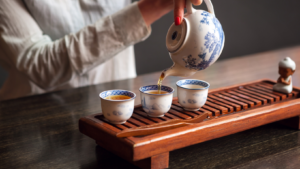China’s rich tapestry of arts offers a window into its deep cultural heritage and evolving societal values. From the delicate strokes of traditional ink paintings to the intricate movements of classical dance, each art form tells a story of the nation’s history and philosophy. These artistic expressions reveal more than just aesthetic beauty; they provide profound insights into the beliefs and traditions that have shaped Chinese society over millennia.
As one explores Chinese arts, it’s impossible not to notice the blend of ancient customs with modern innovation. The fusion of past and present in contemporary artworks highlights the dynamic nature of Chinese culture. Through these creative lenses, one can gain a deeper understanding of how China perceives identity, community, and the world around it. By delving into these cultural insights, individuals can appreciate not only the artistry but also the enduring spirit of a civilization that continues to captivate and inspire.
China Cultural Insights from Arts

Chinese visual arts, with their deep-rooted history, offer a profound window into cultural values and aesthetic ideologies. Key elements like traditional paintings and calligraphy serve as cultural symbols reflecting centuries-worth of wisdom.
Traditional Paintings
Traditional Chinese paintings, such as landscape scenes and portraiture, emphasize harmony and balance, mirroring philosophical concepts like Taoism and Confucianism. Artists use brushwork techniques and ink to depict nature and convey emotions. Works by renowned figures like Gu Kaizhi and Fan Kuan illustrate timeless beauty and historical context, capturing the essence of ancient China.
Calligraphy As A Cultural Symbol
Calligraphy, integral to Chinese culture, transcends mere writing through expressive characters and structured styles. It symbolizes artistic elegance and moral virtues. Notable scripts such as Seal Script and Semi-Cursive are not only aesthetic but also reflect historical evolution. Practiced by scholars, calligraphy embodies a blend of art and literature, often seen as a practice of self-cultivation.
The Performing Arts: A Gateway To Chinese Tradition
The performing arts in China hold a significant place, offering a window into the cultural and historical tapestry of the nation. Through theater, music, and dance, one can explore the depth of Chinese tradition and identity.
Theatrical Traditions

Chinese theater encompasses a variety of rich traditions, each reflecting regional diversity and historical depth. Beijing Opera, or Peking Opera, is a prominent form combining music, vocal performance, mime, and acrobatics. It originated in the 18th century and embodies deep cultural symbolism, with elaborate costumes and expressive makeup representing different characters and themes. Similarly, Kunqu Opera, one of the oldest forms, is celebrated for its lyrical expression and is recognized as a Masterpiece of the Oral and Intangible Heritage of Humanity by UNESCO. The theatrical performances often draw from historical epics and folklore, showcasing moral lessons and philosophical insights. They serve as educational tools, preserving and transmitting traditional values through generations.
Music And Dance
Chinese music and dance express the richness of cultural traditions with great artistic diversity. Traditional music often features instruments like the guzheng, erhu, and pipa, each contributing unique sounds that harmonize ancient melodies with storytelling. These instruments are integral to regional operas, ritual ceremonies, and festive celebrations, contributing to China’s cultural soundscape. In dance, the Dragon and Lion dances are iconic, symbolizing good fortune and strength. These performances are vibrant displays that often accompany festivals and celebrations, reinforcing community bonds and cultural pride. Classical dance, influenced by Confucian ideals, emphasizes grace and internal beauty, reflecting societal values of harmony and integrity. Through music and dance, the essence of Chinese tradition and ethos continues to thrive, weaving an intricate narrative of heritage and creativity.
The Literary Heritage Of China

Literature forms a cornerstone of China’s cultural heritage, intertwining with its history and identity. Chinese literature spans millennia, evolving from ancient poetry to contemporary prose.
Influence Of Classical Poetry
Classical poetry represents a profound element of China’s literary tradition. Renowned poets like Li Bai and Du Fu shaped this influential genre during the Tang Dynasty (618-907 AD). Their works, rich with imagery and emotion, capture the essence of life and nature. Classical poems often adhered to specific structures and tones, reflecting society’s Confucian values and philosophical thoughts. These compositions continue to resonate, studied in schools and celebrated in cultural festivals.



